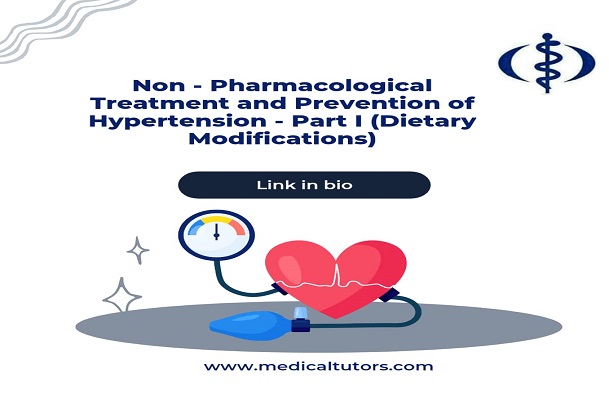 Wash your hands regularly and wear a face mask.
Learn more
Wash your hands regularly and wear a face mask.
Learn more

Introduction
Hypertension is a very common non-communicable cardiovascular disease in Nigeria. Several efforts have been undertaken by different organizations to help increase awareness, control, manage and prevent hypertension in Nigeria.
Modifiable Risk Factors for Hypertension
There are certain risk factors associated with hypertension that may be modified for the prevention and control of hypertension.
These risk factors associated with hypertension are:
These risk factors are often associated with the lifestyle of hypertensive patients. Therefore, a strategic lifestyle modification has been shown to prevent hypertension in some persons, reduce the blood pressure in others and even supplement pharmacologic treatment of hypertension, leading to a reduction in the dosage and number of antihypertensive drugs in some other persons. These lifestyle modifications have the advantage of being less expensive as well as beneficial to the patient’s sense of well-being.
Dietary Modifications for Hypertension in Nigeria
These include:
Salt Intake
Several studies have proven epidemiologically that salt has been connected with blood pressure. It is worthy of note that this association is more marked in individuals who are salt-sensitive and predisposed to hypertension. These individuals have been majorly noted to be blacks who are elderly and obese. An increased salt taste threshold, as well as salt sensitivity, has been associated with Nigerian hypertensives. A reduced salt intake that falls below 6g of salt per day has been found to be effective in reducing blood pressure. Also, recent clinical trials of potassium supplementation have been found to aid salt’s BP- reducing effect. This is because foods that are low in salt are usually low in potassium as well.
A reduction of up to 5mmHg per day may be seen in the systolic blood pressure when the salt restriction is in effect. In fact, local evidence has shown that if well adhered to, this salt restriction regimen may give the expected results in a few weeks.
Practical Applications of Salt Reduction in the Everyday Nigerian Diet
Practically speaking, the ideal salt reduction regimen for hypertensives involves the addition of little or no salt to the diet. This automatically eliminates foods that are processed or preserved, as well as foods with salt-based additives. It should be noted that salt is usually described as sodium on food labels. Patients are strongly encouraged to study all food labels before purchase or consumption.
Of course, the food that is adherent to the salt reduction regimen will initially taste bland but there is usually an adaptation to the taste of such food with time.
Fortunately, there are alternatives to salt which are commercially available for purchase and should be used. This should be done under the close supervision of a dietitian.
Some practical tips for salt consumption include:
Sugar Intake
A study by Mansoori et al titled “Added Sugar Intake is Associated with Blood Pressure in Older Females: conducted in 2019 found that the association between the intake of added sugar and the systolic and Diastolic Blood pressures is significant. This was noticed after other variables like physical activity, body mass index, and income was controlled. It was predicted that a reduction of 2.3 teaspoons of sugar could result in a Systolic BP drop of 8.4mmHg as well as a diastolic BP drop of 3.7mmHg.
Increased refined sugar intake is also associated with an increase in weight and obesity which are predisposing factors for hypertension
Practical Tips to Reduce Refined Sugar Consumption
The DASH Diet (Diet Rich in Fresh Fruit and Vegetables and Low in Unsaturated Fats)
This is also known as the Mediterranean diet and it has been shown to reduce blood pressure as well as the glucose and lipid levels in the body. It also increases the potassium and calcium intake of the individual.
Practical Tips for Application of the DASH Diet
Conclusion
Dietary modification has been found to be beneficial in controlling and preventing hypertension. Dietary modifications should be implemented as soon as possible even without a diagnosis of hypertension.